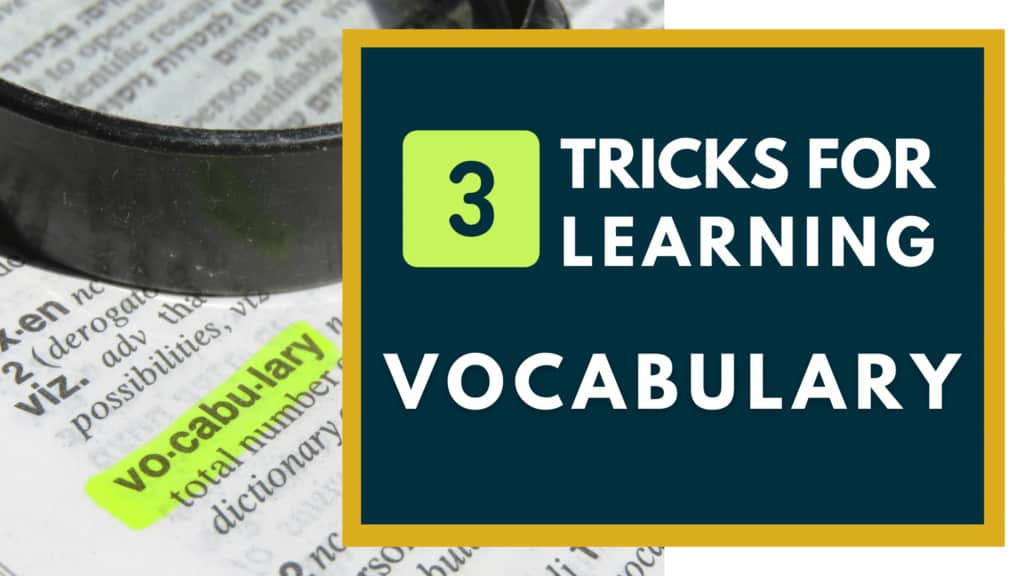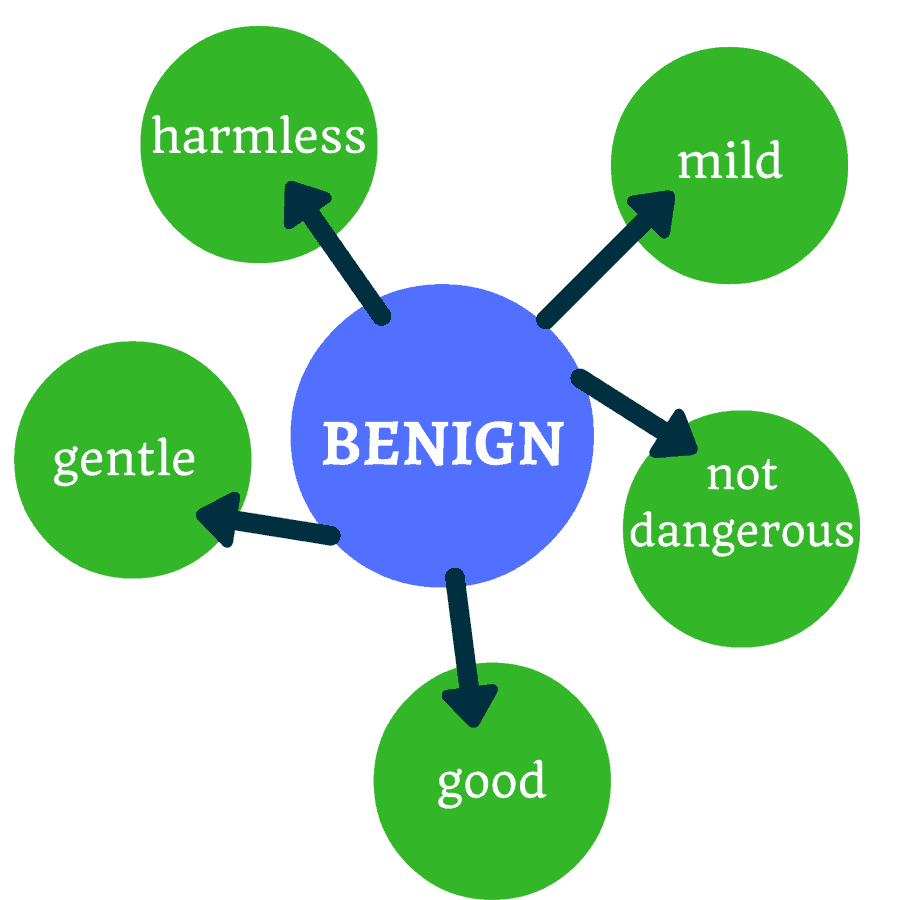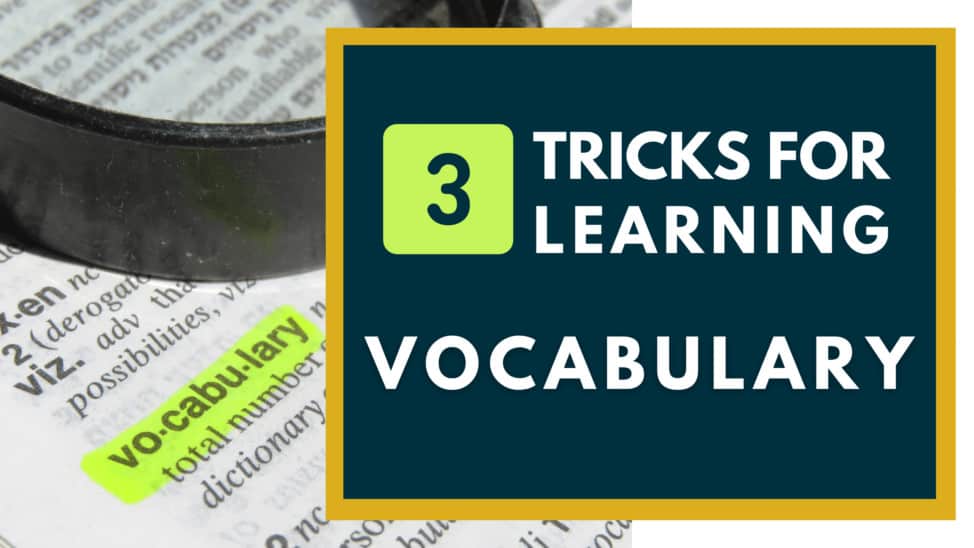
By Katie Azevedo, M.Ed.
Vocabulary quizzes pop up in almost all school subjects. English teachers and foreign language teachers probably use vocabulary quizzes the most, but you’ll likely have vocabulary quizzes in history, biology, etc. In other words, there’s no escaping the dreaded vocab test. So if you can’t run or hide from words like egalitarian and parsimonious, you might as well face them head on.
Below are 3 tricks for learning vocabulary words.
(Oh, and side note: I say “tricks” — but I know you already know that there’s no magic potion for memorizing words the night before a test. What I’m referring to as “tricks” are actually legitimate strategies for learning vocabulary words. Bummer, huh?)
1. Associate an image with the word.
Many visual learners benefit from this strategy, but it’s actually quite helpful for any type of learner. If the word is a noun, like “nucleus” or “infrastructure,” a simple Google image search will give you plenty of sensible visuals. If the word is an adjective like “deleterious” or “morose,” then a Google image search will likely give you some more ‘creative’ results, but it can still be helpful.
One reason why associating an image with a word is a great trick for learning vocabulary words faster is that images tend to impact our emotions differently than words do. An image of the word is more likely to remain in your brain (I can’t get that picture out of my head!) more vividly than just reading the word on paper. Also, the wackier the image, the more likely you’ll be to remember it.
Sometimes you won’t even need to do a Google image search for the word because you’ll already have an image in mind. For example, the word “sluggish” might make you think of a slimy, slow-moving slug: and sluggish does indeed mean slow-moving. Your mental image of a slug might be strong enough for you — or, you could still Google the word to get an even more vivid (gross!) visual. If you’re into flashcards, print out the image and slap it on a flashcard.
Oh, you want a picture of a slug? Here!

2. Use nmeumonic devices.
Yeah, I know “nmeumonic” is a vocabulary word itself, but basically nmeumonic devices are creative and catchy ways to remember information, including rhymes, short poems, alliteration, etc.
Here’s some examples of common nmeumonic devices:
ROY G BIV: Used to remember the colors of the rainbow (red, orange, yellow, green, blue, indigo, violet)
King Phillip Came Over For Good Spaghetti: Used to remember the Taxonomy Order for a biology class (Kingdom, Phylum, Class, Order, Family, Genus, Species)
Here’s another example — of my own fantastic creation: If you’re trying to remember that amiable means friendly, you could recognize that the word starts with AMI, which sounds like AMY, which could be the name of a friendly person. So your nmeumonic device would be “Amy is my friend” to remind you that amiable means friendly.
Here’s another example: Let’s say you’re trying to remember that dilatory means tending to delay. You might recognize the “dil” in dilatory and think “dilly dally,” which means to go slowly and take one’s time. Therefore, you would think “dilly dally” every time you see “dilatory,” and would hopefully remember that it means “tending to delay.”
Another example (Heck, three is a good number): Let’s say you need to remember that cantankerous means bad-tempered. Well, you might look at the word and sort of “see” the word “cranky” — you know, because both words share a c, r, a, n, and k. Therefore, every time you look at the work cantankerous, you would think cranky!
When creating your own nmeumonic devices, remember that the more creative and outrageous the device, the more likely you will recall it. So feel free to be as weird as you want here. Let it all out, folks.
3. Make a visual chart.
I’m hoping you don’t roll your eyes at this one, because it seriously works. Making a chart of some sort — I’ll give some examples in a second — is a terrifically effective trick for learning vocabulary words. This strategy might take a little more time than others, but you’ll end up saving time in the end because you’ll actually learn the words and won’t have to keep re-studying them.
The idea is that you come up with a visual representation of about 3-5 other words that are associated with the vocabulary word you’re trying to learn. Your visual representation could be a list, a web chart, whatever you want. The benefit of studying words that are related to your main word is that you’re giving yourself a greater chance to latch on to and retain the word’s meaning. Essentially, you’re giving your brain more “handle bars” to hold on to as you try to store the vocabulary word in your memory.
Example: Let’s say you want to learn the word benign. Here’s what a visual representation of that word could look like.

Bonus: One of the best tricks for learning vocabulary words EVER …
I can not emphasize enough the importance of attacking new material from three different angles. Using three separate study methods to learn anything is close to one of the most effective study habits you can use. And it’s best to use a combination of visual, auditory and silent approaches — if possible. I talk all about how to do this in my How To Remember What You Study video, or you can read the blog post about it.
And keep in mind that learning new vocabulary words is a process. It takes time. It’s not about memorization. If you spend a few hours studying one night but forget it all the next day, please know that’s normal! We all do that. It’s part of the learning process. (They don’t call it a “learning process” for nothin’!) So what do you do if this happens? Short answer: Keep going. Keep studying. Little bits every day. Repetition.
And soon enough words like deleterious, perfunctory and amelioration will be just rolling off the tip of your tongue. Ha.

